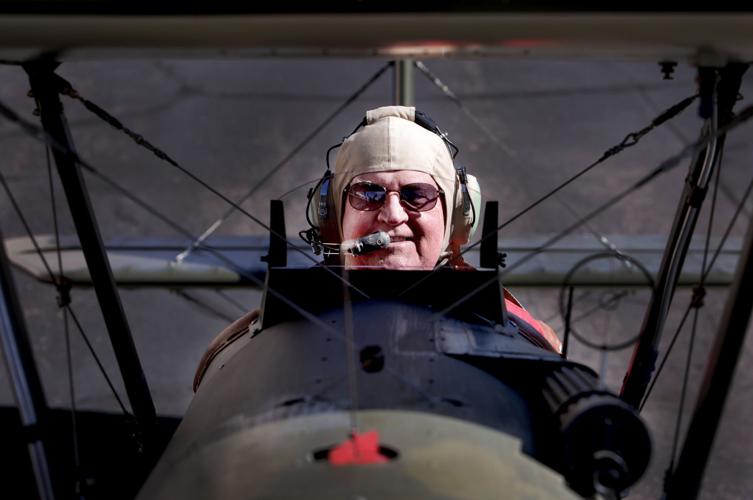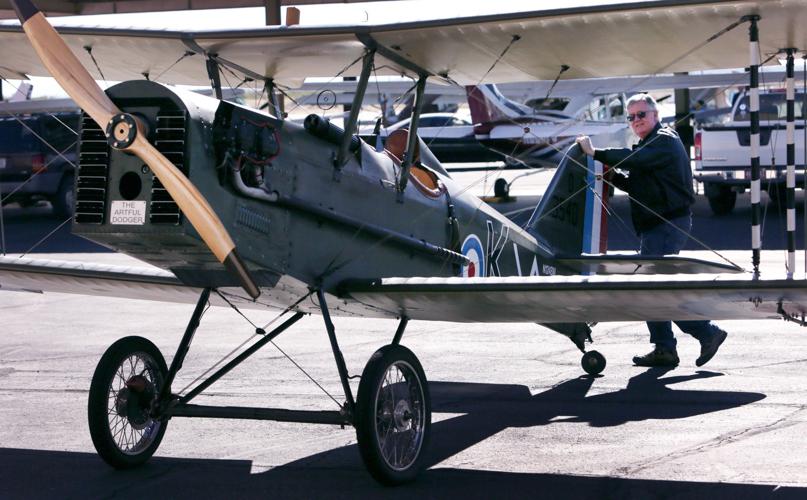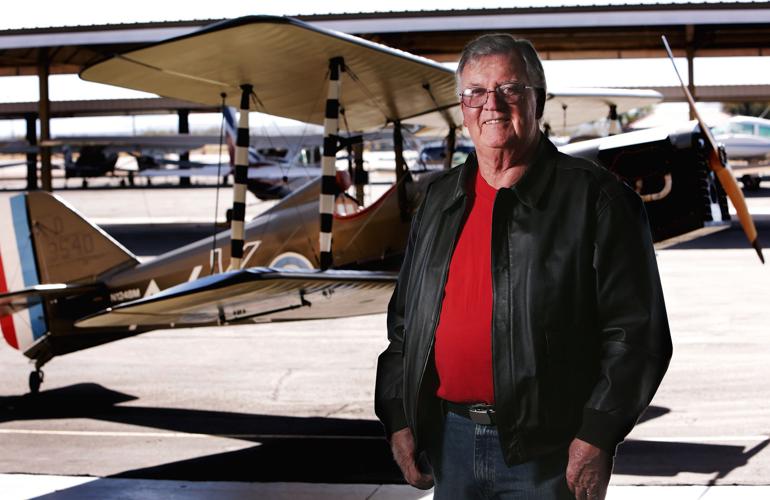When he was 6, Bill McLearran would climb as high as he could, shimmying up the stacks of old telephone poles his family burned for fuel, to watch planes take off from the small, grass runway airport near his home in Sheridan, Indiana.
“It was a thing — I could sit there all day,” he recalls.
His school art projects centered on planes. He still has a sketch he did of an old World War II Stearman. He crafted a replica of a Piper Tri-Pacer from two pieces of cardboard. It earned him an “A.”
McLearran began flying just after he turned 18. The lessons were a present from his new wife, Janet, who’d saved up her paychecks from a fast-food eatery.
“What a gift,” McLearran says, smiling.
He’s been soaring ever since. Nearly 54 years.
In that time, McLearran, 71, has logged more than 10,000 hours and rebuilt four planes. These days, he’s got three winged projects that keep him busy, including a 1946 fire-engine red Globe Swift that he considers “the Ferrari of airplanes.”
The father of two and grandfather of three was honored last month with the Federal Aviation Administration’s Wright Brothers Master Pilot Award, which can only be earned with at least 50 years flying experience as well as letters of recommendation and an exemplary aviation record. Think of it as a pilot’s lifetime achievement award. He’s one of 11 pilots across the state who earned the distinction in 2016.
During the ceremony, attended by more than 100 people, “I got a standing ovation,” says McLearran, whose retirement job is managing Mobile Aire Hangars at Ryan Airfield. “That just absolutely blew me away.”
A humble guy, it actually took him three years just to apply for the award. He found out he’d won when a trophy company called to check the spelling of his name for the plaque.
To the other pilots whose second home is Ryan Airfield and who pull up chairs in McLearran’s wood-paneled office — the “Old Pilots Day Care Center” — to enjoy doughnuts and steaming cups of coffee, the award comes as no surprise. The flight instructor is a veritable aviation encyclopedia as well as a mentor who’s quick to lend a hand with a project — and get another pot of joe brewing.
“He sure deserves it,” says Norman Younie, who praised McLearran as a top-notch flight instructor.
It’s a sentiment echoed in his recommendation letters that call him out as the go-to guy for all things relating to flight.
The oldest son in a family of 10 kids, McLearran remembers clipping out pictures of planes and then finding out everything he could about the specific models. He enlisted in the Air Force but couldn’t fly, a job reserved for officers. Instead, the Vietnam veteran took advantage of the military’s flight clubs to hone his skills.
He’s had some close calls over the years. In 1991, the propeller spun off the Volksplane, an aircraft with a Volkswagen engine, he and another man were flying in.
“We were still flying — it was a glider,” McLearran recalls.
More harrowing was a midair collision in 1971 at Tucson International Airport. An air traffic controller cleared McLearran for landing — but also gave the go-ahead for takeoff to a Cessna crossing McLearran’s runway. Both planes were heavily damaged, but no one was hurt.
“That made me sit up and take notice,” McLearran says. “That made me really double-check everything.”
He makes a point of flying into the wild blue yonder once or twice a week and even though his first flight was more than five decades ago, he can still easily conjure up its thrill.
“Every time I solo a new student,” McLearran says, smiling, “I’m back up there.”






